 |
| Monarch Butterfly (Danaus plexippus) on a Sunflower |
- wing length
- body condition
- weight
- sex
- temperature of the butterfly
- parasite load
They would also like to come up with a system for analyzing proteins in the butterflies. The brightness and boldness of the colour of an individual butterfly is an indication of how much proteins it has in it's body, which is indicative of muscle fitness. In other words (as I understand it) the brighter the orange on the butterfly, the more proteins, the more muscle for flight, the better the chance of migrating to Mexico.
Rosetta McClain Gardens and the Journey South
The Rosetta McClain Gardens is a lovely park located on the Scarborough Bluff in Toronto, ON. If you haven't had the chance to visit, I highly recommend it. Not only can you observe Monarchs during their migration, but many other butterflies, bees and birds can be observed during migrations and throughout the warmer months. A Raptor Watch is also present in the park during hawk migration periods. The Monarch Butterflies that pass through Rosetta McClain in the fall are on a journey south to the Oyamel fir tree forests in Mexico (west of Mexico City). They travel approximately 50 nautical miles per day (80 km), depending on the wind and other weather conditions and arrive in the forests of Mexico around Christmas- a journey of almost 5000 km (3000 miles). 😲 If you don't find this shocking, you should! It's an incredible journey!!! 5000 kilometers travelled by an insect that weights only half a gram!!! I feel the exclamations points are needed for this exception journey.
In 2016 the Rosetta McClain Gardens tagged 900 Monarchs. For 2017 they ordered 1500 tags and have used more than half with a few weeks of tagging to go. The volunteers indicated that they probably could have tagged even more than 1500 this year. While I've heard people argue that 2017 has been a bumper year for Monarchs, I think the more likely explanation is this is what Monarch Migration is supposed to be like and recent years have just been terrible for the Monarchs.
Tagging
Each Monarch receives a tag (sticker with identification number) on it's left hind wing. The Monarch tagging at Rosetta McClain Gardens has a high recovery rate of 1-2%, while there are some tagging sites which have a 0% recovery rate. The recovery rate is the number of Monarchs that are re-captured with tags from a specific site. Or another way of putting,it, out of all the butterflies tagged at a site how many are re-captured for data collection. For example an individual from Rosetta McClain in 2016 was tagged last fall and a few weeks later the butterfly was re-captured in Florida. The question of why the recovery rate is so high is still something the researches hope to answer. In a few years there may be better data on this, as the team hopes to equip the butterflies with GPS locator tags instead of sticker tags.
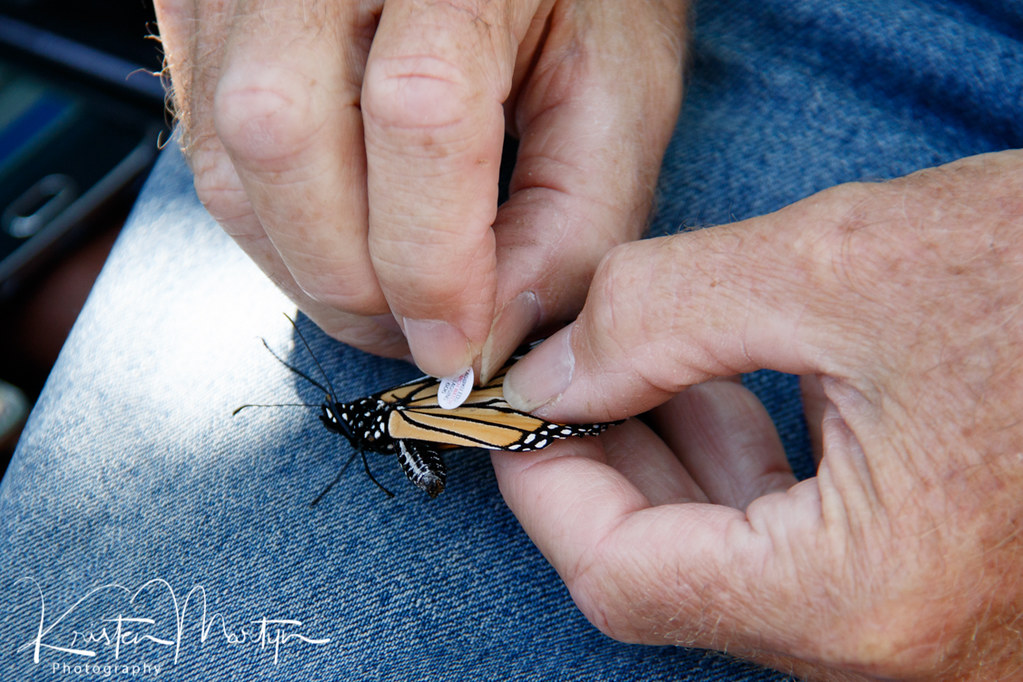 |
| Monarch Butterfly (Danaus plexippus) Being Tagged |
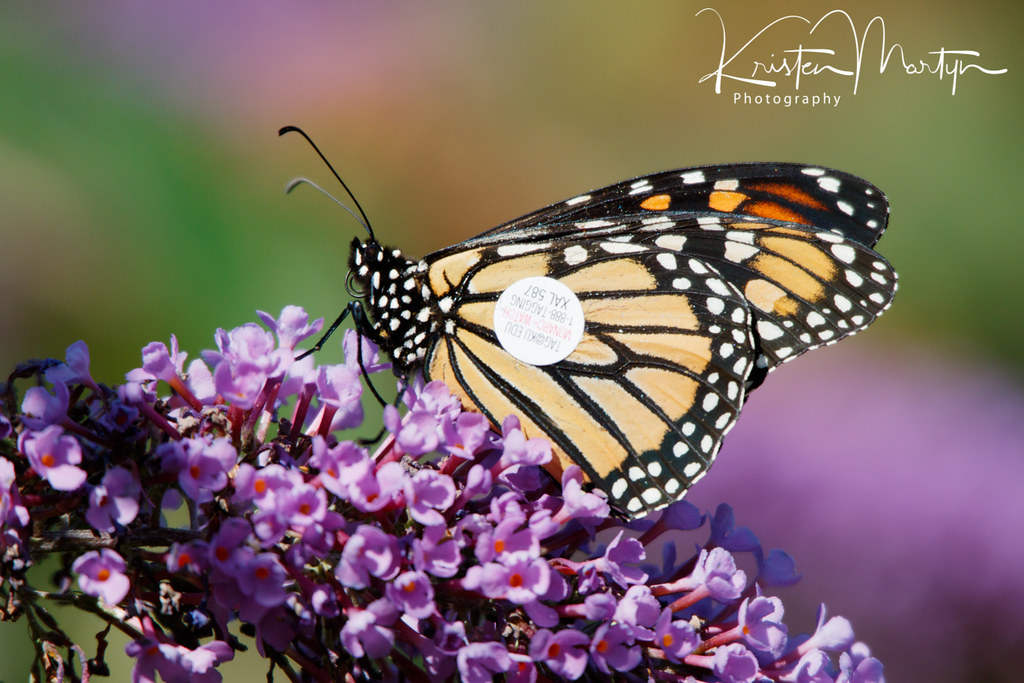 |
| Monarch Butterfly (Danaus plexippus) After Tagging |
Males vs Females
Another question the team hopes to answer in the future is why there are so many males compared to female butterflies at Rosetta McClain. Roughly 76% of all the butterflies captured at this site are male, while 24% only are female. In addition to habitat loss and pesticides, this could be a reason why populations haven't been doing great in Ontario. While more energy is needed in nature to produce a female, their egg laying potential is very important to the overall population. So why the imbalance?
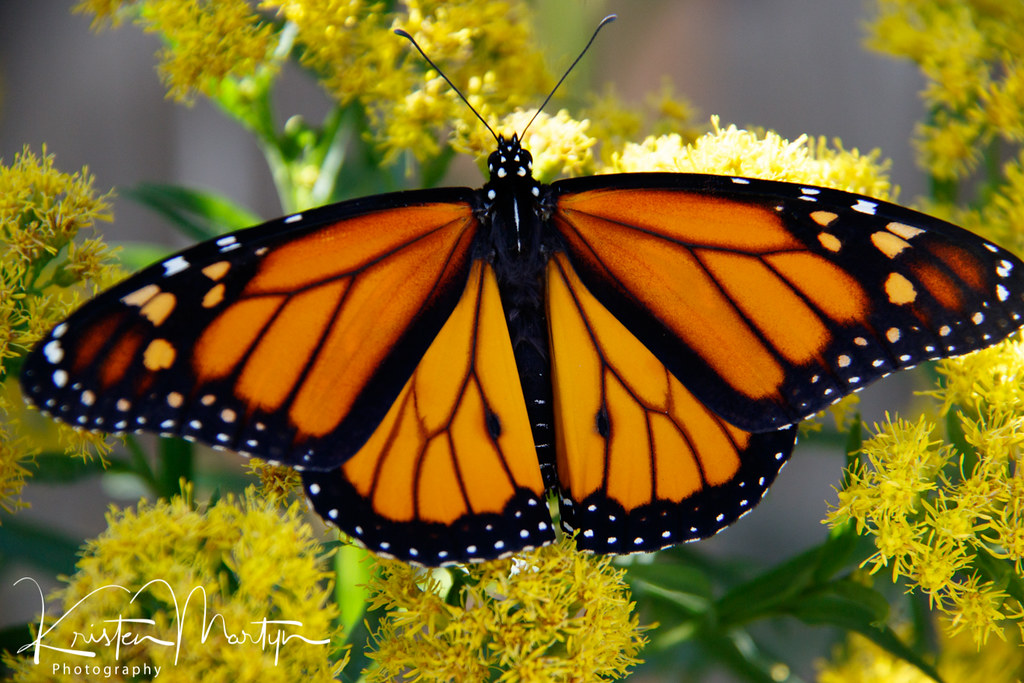 |
| Monarch Butterfly (Danaus plexippus) Male- Note scent glands (dots) on hind wings |
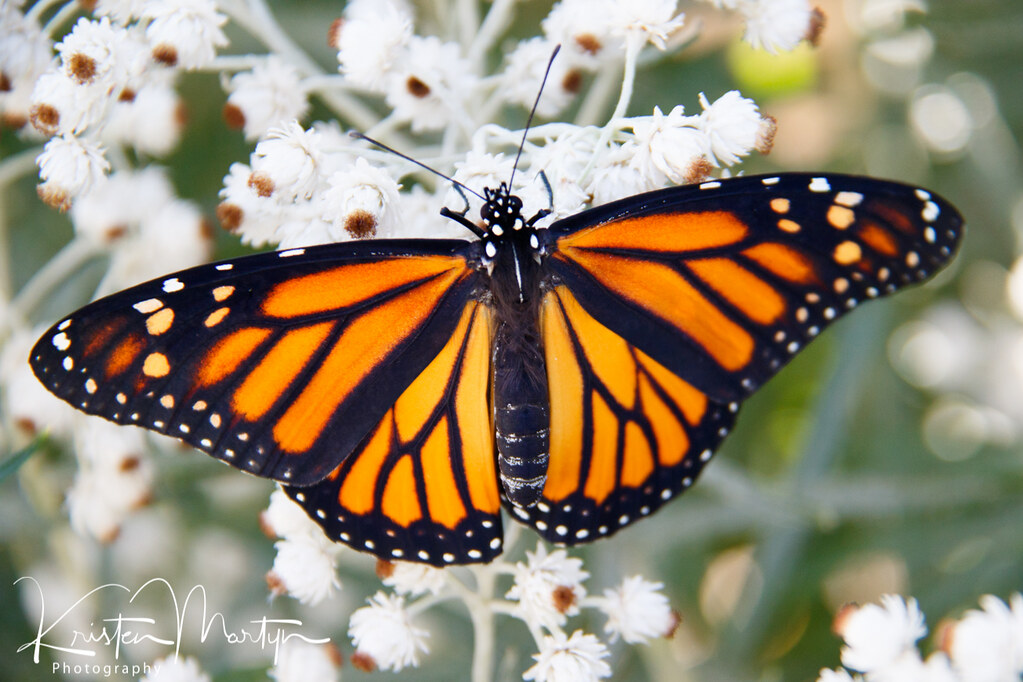 |
| Monarch Butterfly (Danaus plexippus) Female- Note thick inner margins on forewings and thicker veins on the hind wing |
Data Collecting
The butterflies are captured and re-captured in butterfly nets from around the Rosetta McClain Gardens and brought to the tagger for data collection. As previously mentioned the volunteers record the wing length, the weight of the butterflies (grams), the body temperature, sex and body condition (on a scale of 1-5). Sadly not all Monarchs will make the journey south as the body condition of some cannot handle the journey.
 |
| Monarch Butterfly (Danaus plexippus) Wing Length Measurement |
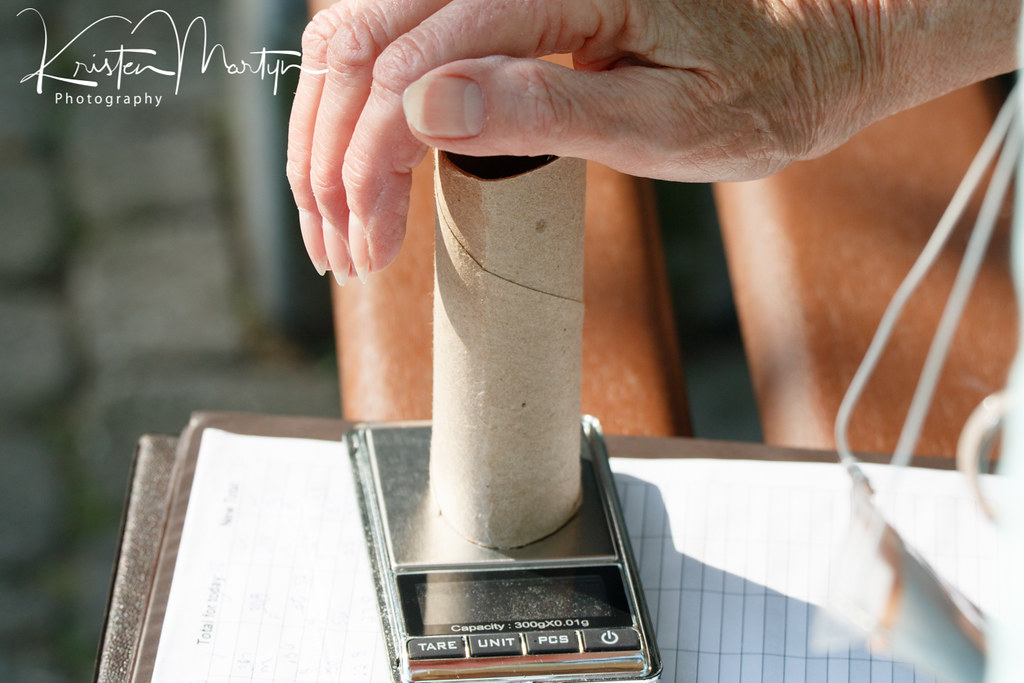 |
| Monarch Butterfly (Danaus plexippus) Body Weight |
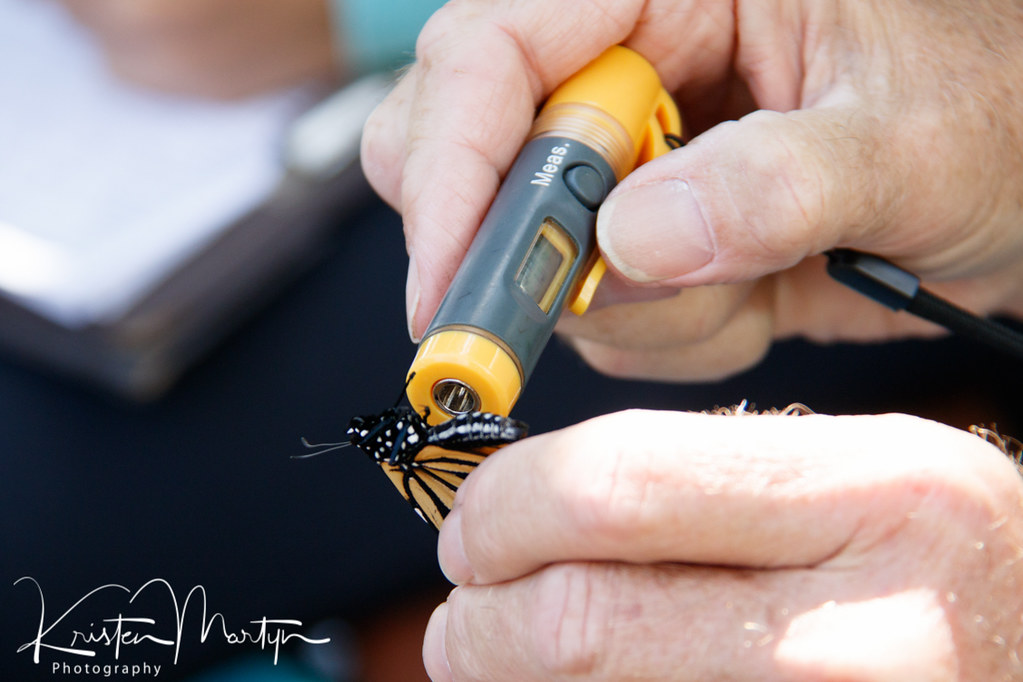 |
| Monarch Butterfly (Danaus plexippus) Body Temperature |
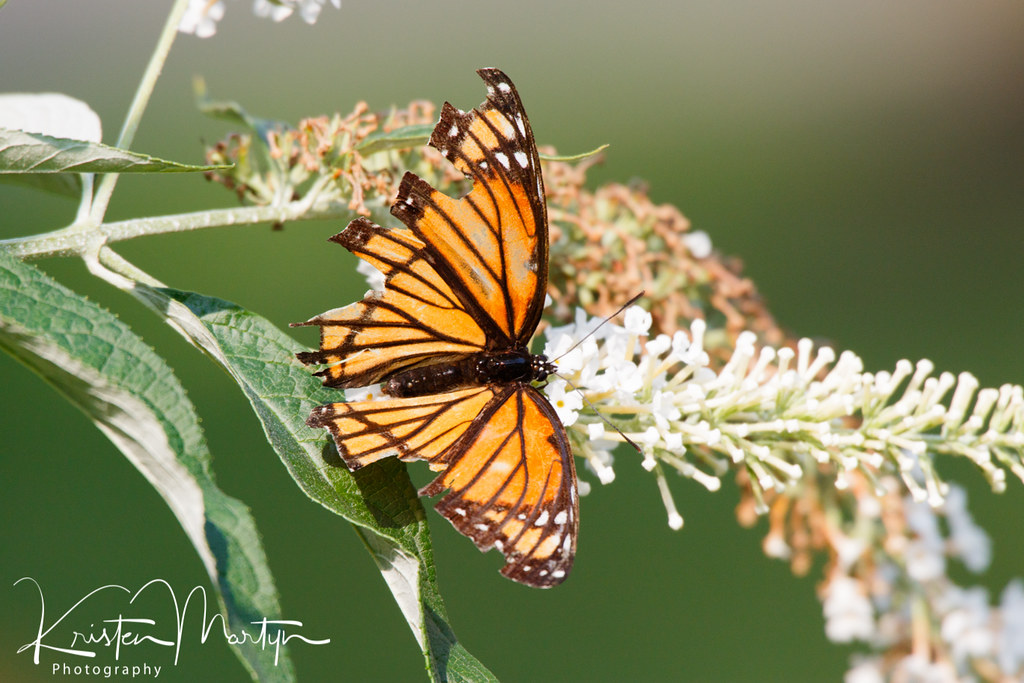 |
| Monarch Butterfly (Danaus plexippus) in Poor Condition |
Some of the butterflies are tested for parasites as well. The testing is done by collecting an imprint of some of the abdominal scales using an clear adhesive disk. The imprint is then viewed under a microscope at a power of 40-80x. If the butterfly has parasites dots are present around the scales.
Once the data is recorded it is entered into an electronic spreadsheet via a tablet and is immediately uploaded to the University of Kansas (monarchwatch.org) database which collects information about the Monarchs from around North America.
A Note About Citizen Science
Monarch Butterfly tagging at the Rosetta McClain Gardens is a wonderful example of citizen science. The volunteers work hard to collect data and inform the general public about the butterflies. A big thank you to the team at Rosetta McClain for allowing me to take photos, videos and pick their brains on everything Monarch. I hope you were able to get out an enjoy the Monarch Butterfly migration this year, in your backyard or at a Monarch Butterfly tagging site. If you haven't done so already I also highly suggest a visit to Rosetta McClain in addition to wonderful butterfly education the gardens are stunning and very tranquil.
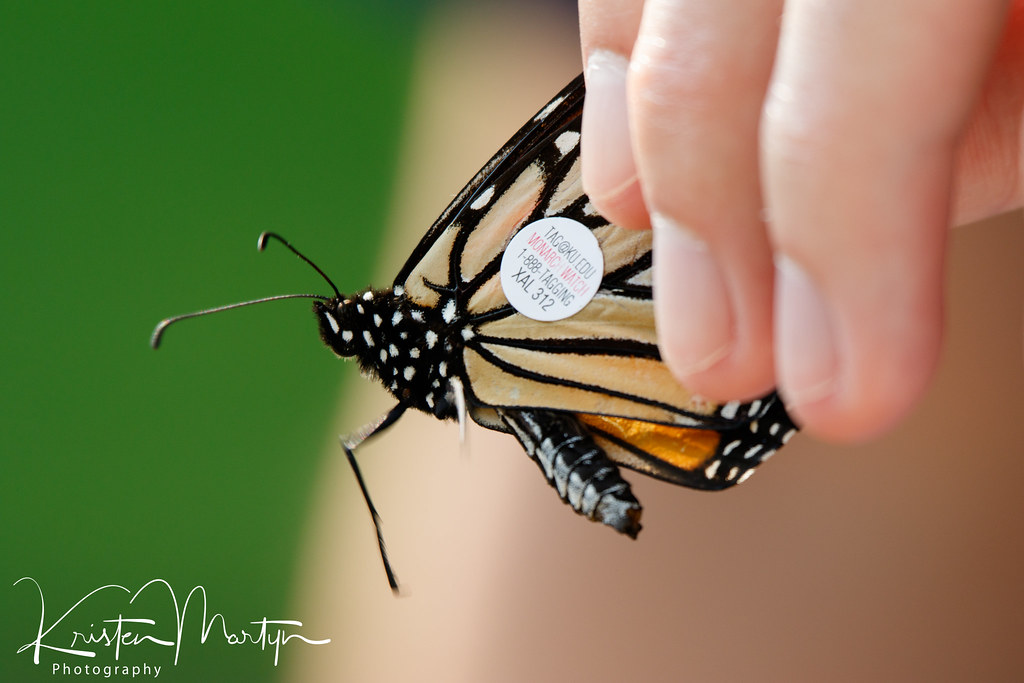 |
| Monarch Butterfly (Danaus plexippus) After Tagging |



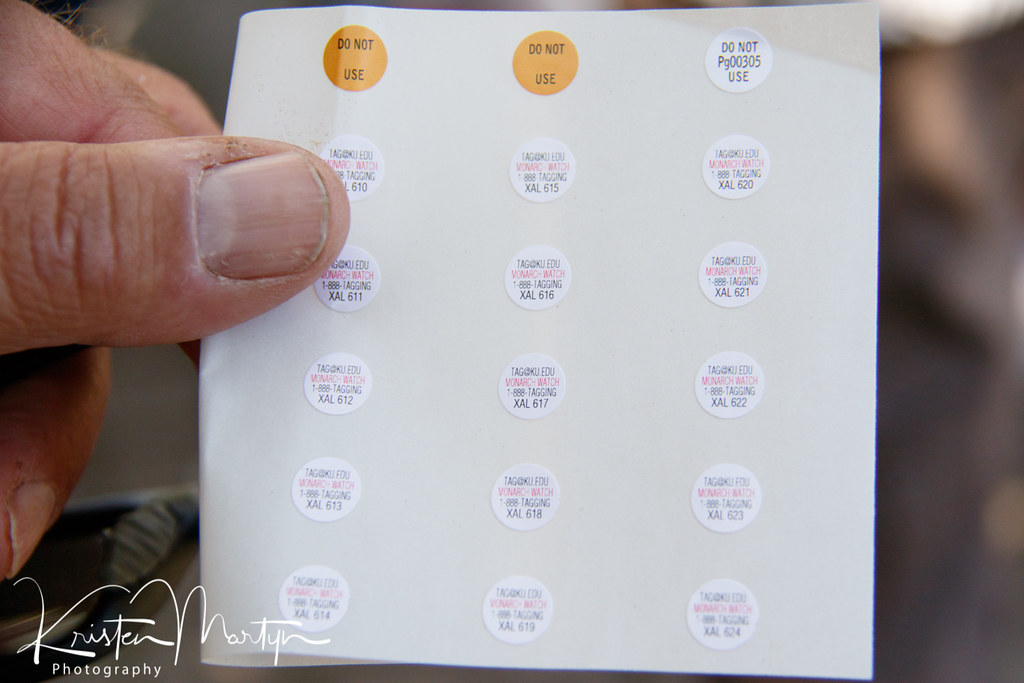
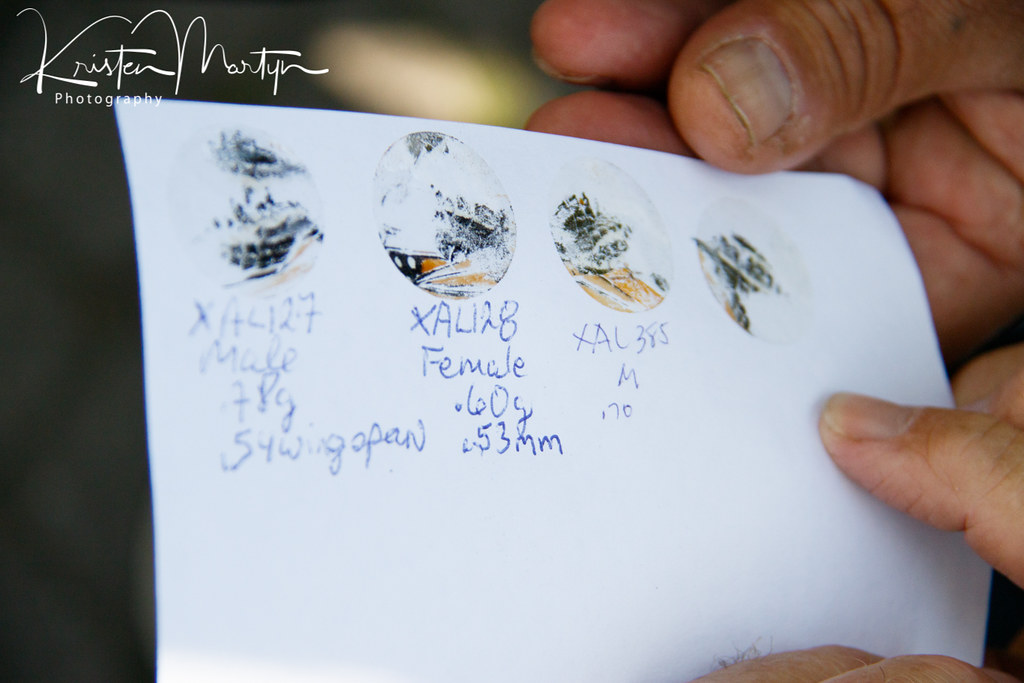
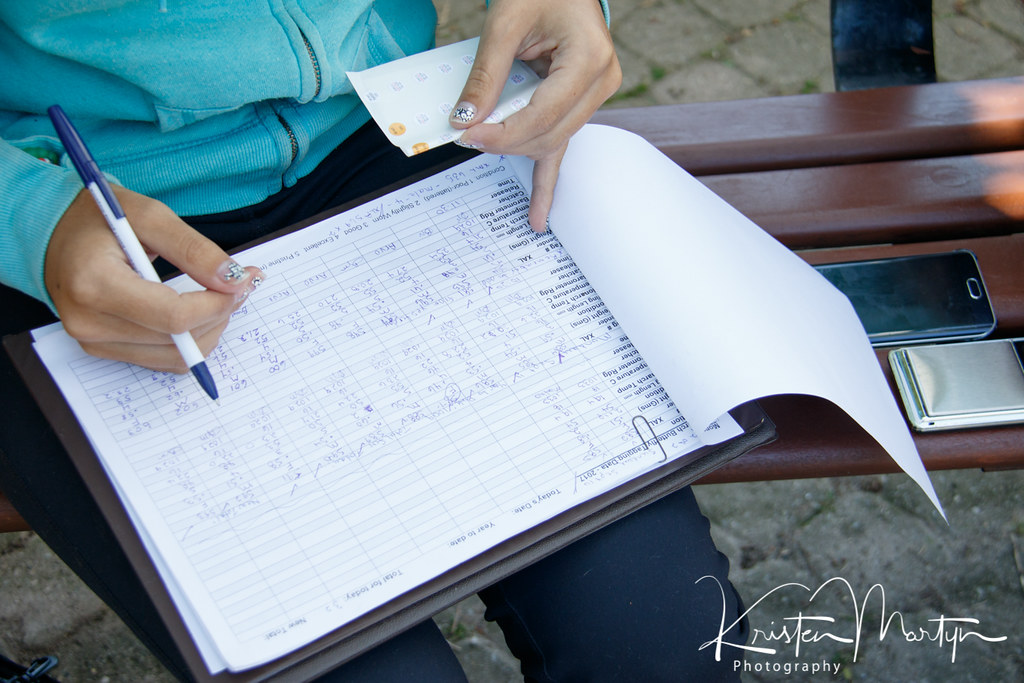
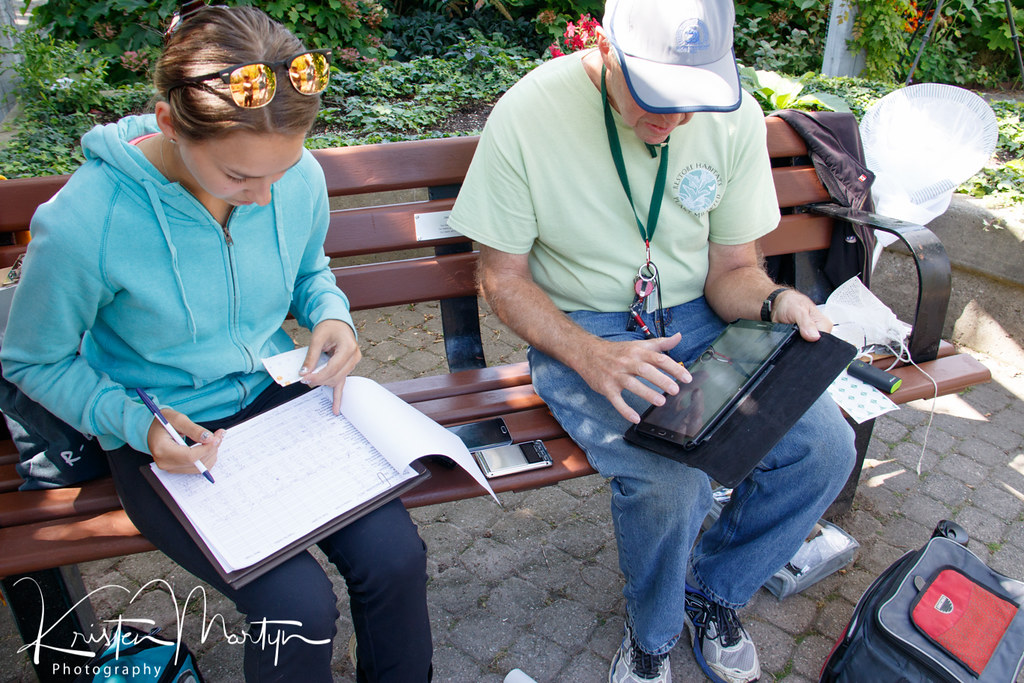















No comments:
Post a Comment